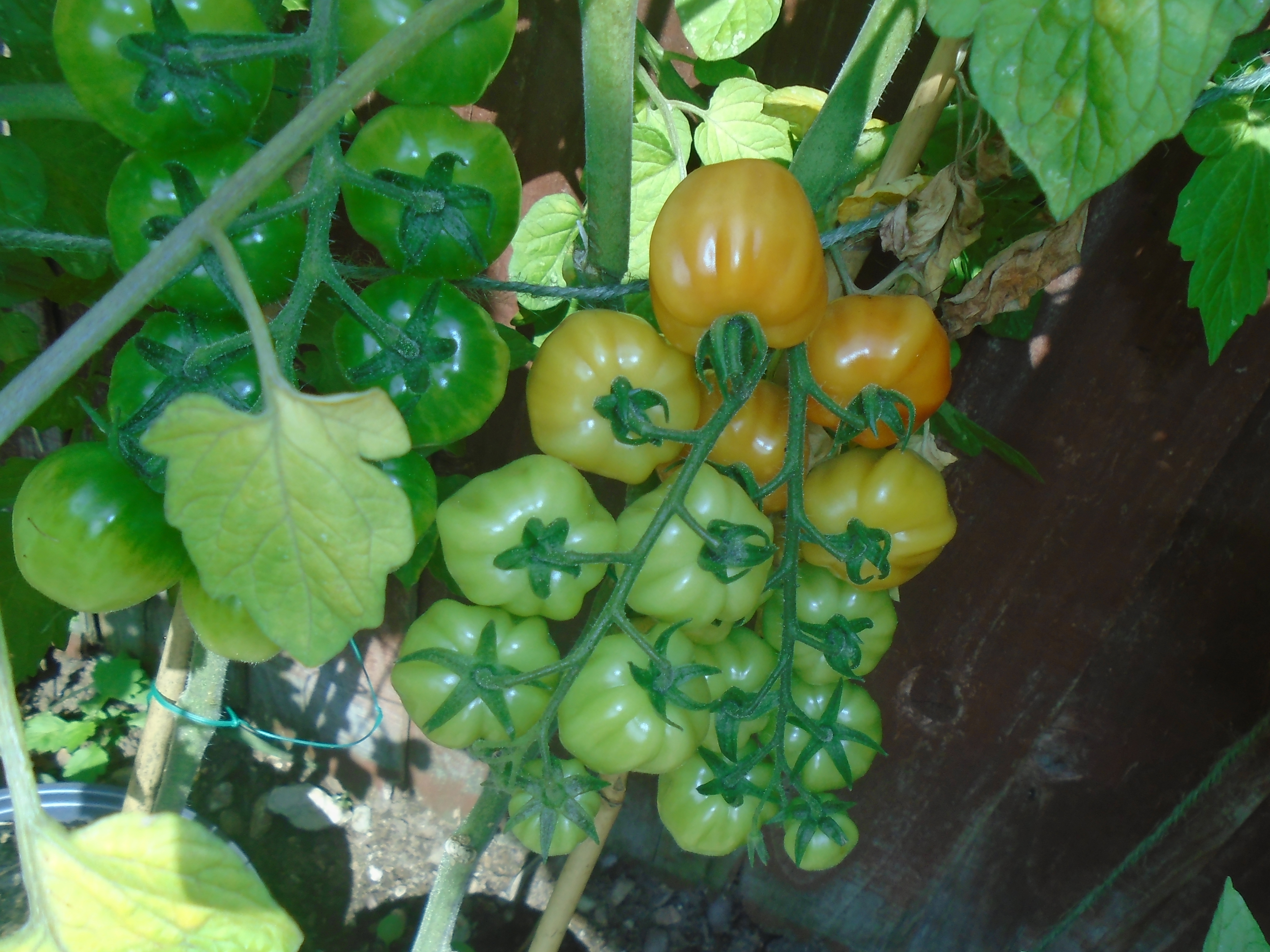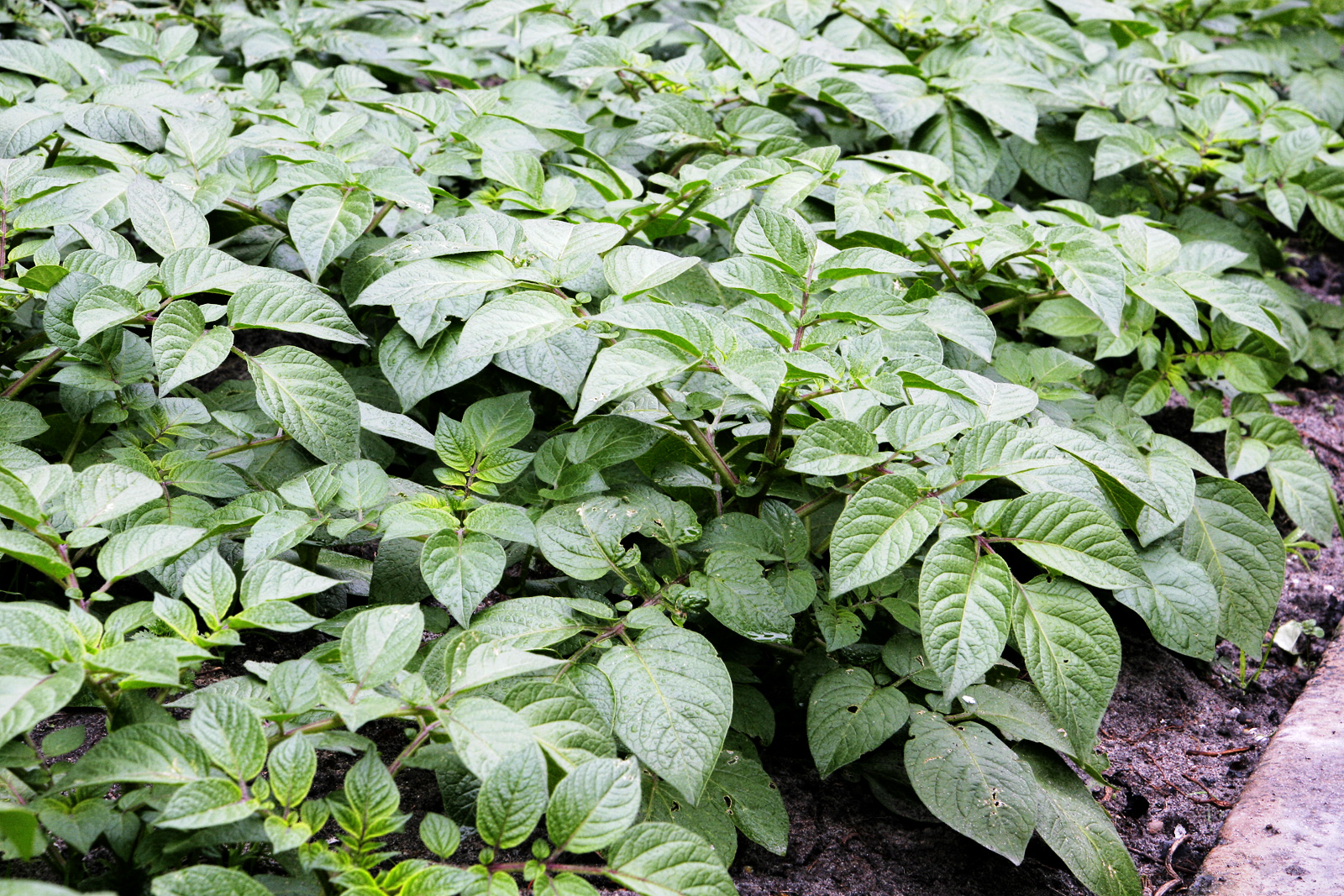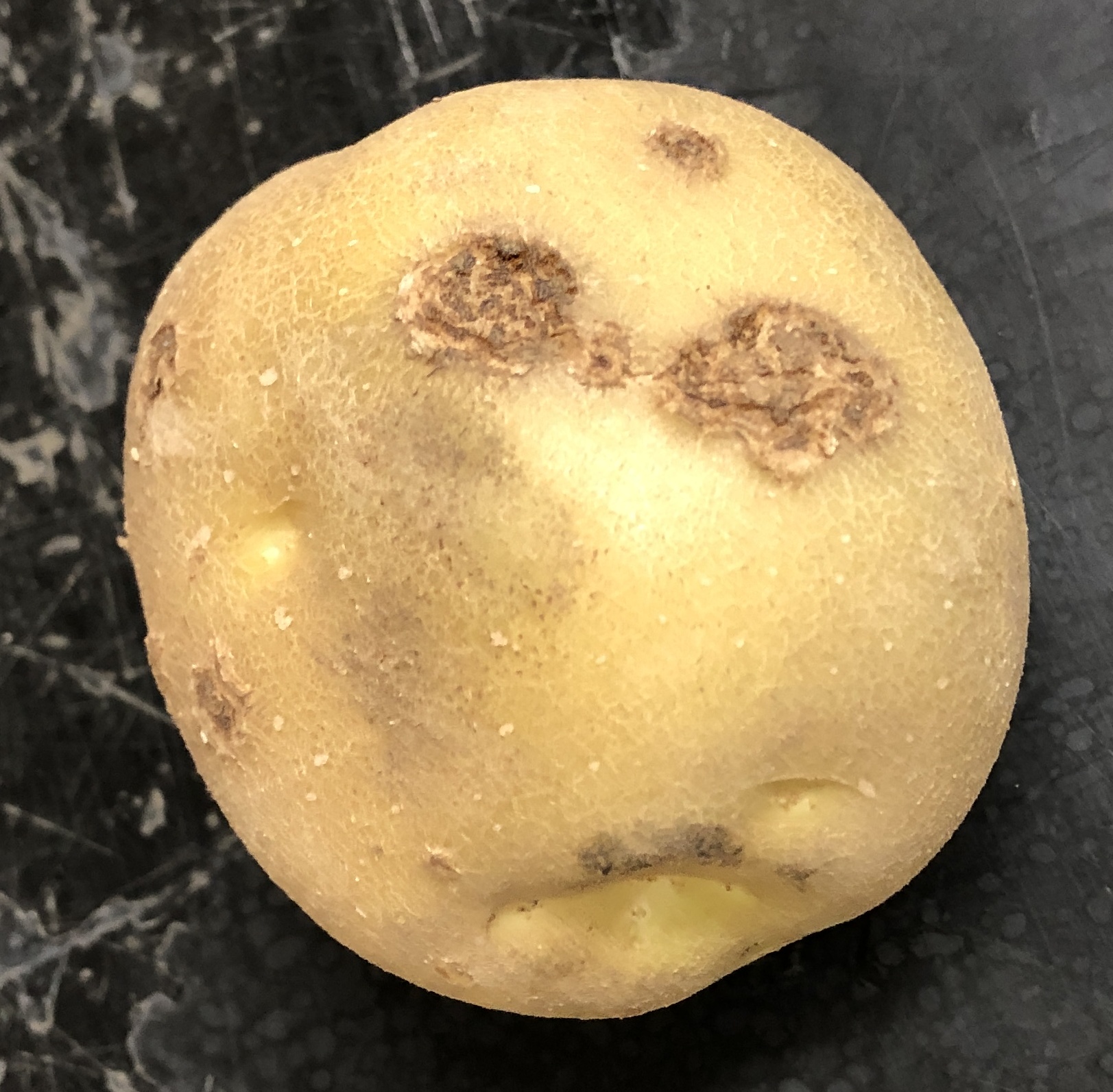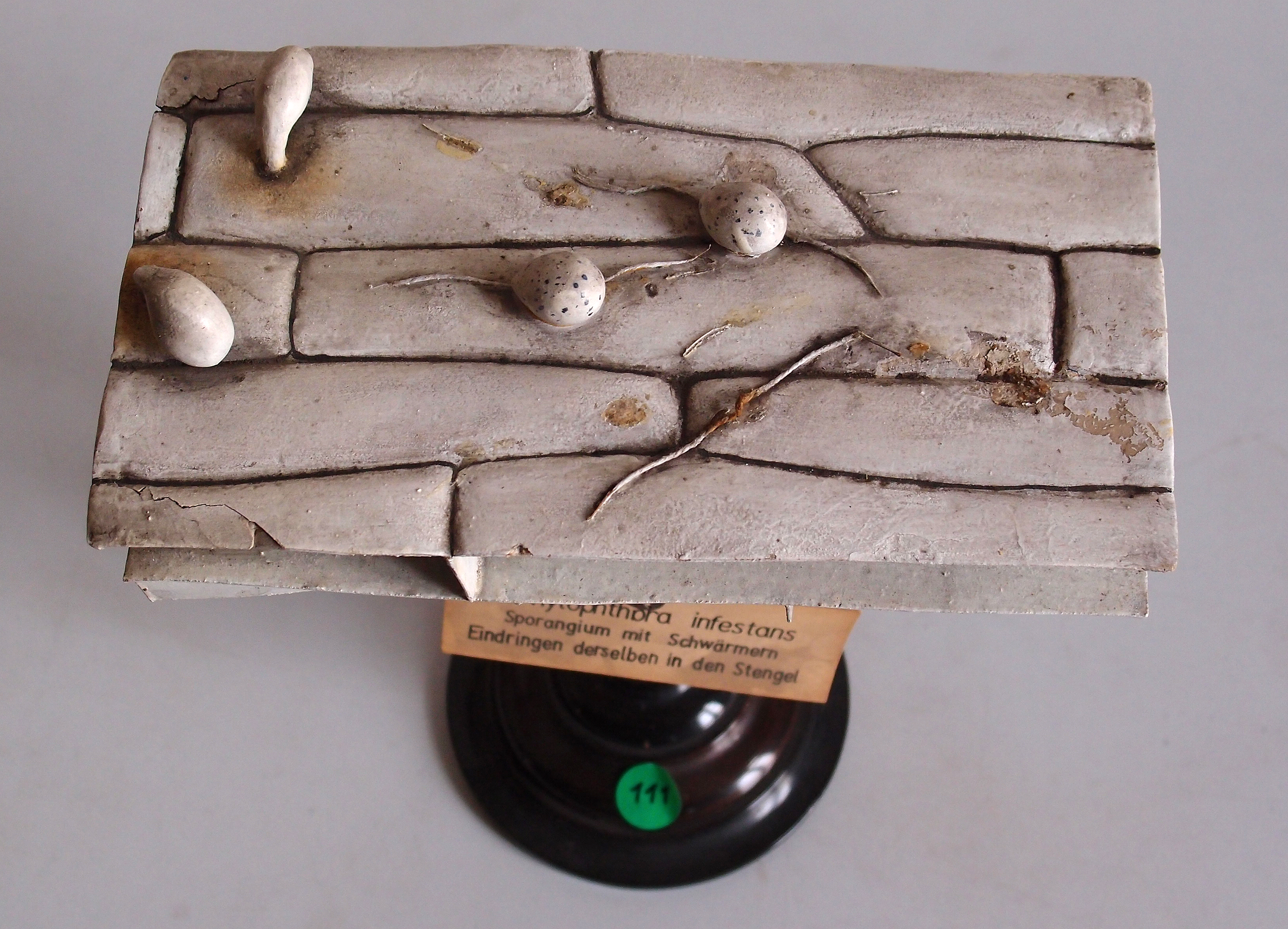|
Red Norland
Red Norland is a red, early-maturing potato.Paul R. Wonning Smaller tubers (B and C size) are commonly sold as “baby reds” and this variety is often served boiled or in potato salads. The progenitor variety, 'Norland', was released by the North Dakota Agricultural College in 1957. Since the release of 'Norland', other darker red skinned variants were selected, most notably 'Red Norland' and 'Dark Red Norland'.Waterer, D.; Elsadr, H.; Mcarthur, M. L. (2011). “Skin Color, Scab Sensitivity and Field Performance of Lines Derived from Spontaneous Chimeras of Red Norland Potato”. ''American Journal of Potato Research'' 88: 199–206 None of these three varieties is under plant variety protection. The darker red strains are now widely grown, and 'Norland' is rarely grown. 'Norland' and its selections are widely adapted, but have relatively low to intermediate yields. Botanical Feature * Medium large with medium thick prominently angled stems and determinate growth * Dark red ... [...More Info...] [...Related Items...] OR: [Wikipedia] [Google] [Baidu] |
Potato
The potato is a starchy food, a tuber of the plant ''Solanum tuberosum'' and is a root vegetable native to the Americas. The plant is a perennial in the nightshade family Solanaceae. Wild potato species can be found from the southern United States to southern Chile. The potato was originally believed to have been domesticated by Native Americans independently in multiple locations,University of Wisconsin-Madison, ''Finding rewrites the evolutionary history of the origin of potatoes'' (2005/ref> but later genetic studies traced a single origin, in the area of present-day southern Peru and extreme northwestern Bolivia. Potatoes were domesticated there approximately 7,000–10,000 years ago, from a species in the '' Solanum brevicaule'' complex. Lay summary: In the Andes region of South America, where the species is indigenous, some close relatives of the potato are cultivated. Potatoes were introduced to Europe from the Americas by the Spanish in the second half of th ... [...More Info...] [...Related Items...] OR: [Wikipedia] [Google] [Baidu] |
Solanum
''Solanum'' is a large and diverse genus of flowering plants, which include three food crops of high economic importance: the potato, the tomato and the eggplant (aubergine, brinjal). It is the largest genus in the nightshade family Solanaceae, comprising around 1,500 species. It also contains the so-called horse nettles (unrelated to the genus of true nettles, '' Urtica''), as well as numerous plants cultivated for their ornamental flowers and fruit. ''Solanum'' species show a wide range of growth habits, such as annuals and perennials, vines, subshrubs, shrubs, and small trees. Many formerly independent genera like '' Lycopersicon'' (the tomatoes) and '' Cyphomandra'' are now included in ''Solanum'' as subgenera or sections. Thus, the genus today contains roughly 1,500–2,000 species. Name The generic name was first used by Pliny the Elder (AD 23–79) for a plant also known as , most likely ''S. nigrum''. Its derivation is uncertain, possibly stemming from the Latin w ... [...More Info...] [...Related Items...] OR: [Wikipedia] [Google] [Baidu] |
North Dakota
North Dakota () is a U.S. state in the Upper Midwest, named after the indigenous Dakota Sioux. North Dakota is bordered by the Canadian provinces of Saskatchewan and Manitoba to the north and by the U.S. states of Minnesota to the east, South Dakota to the south, and Montana to the west. It is believed to host the geographic center of North America, Rugby, and is home to the tallest man-made structure in the Western Hemisphere, the KVLY-TV mast. North Dakota is the 19th largest state, but with a population of less than 780,000 as of 2020, it is the 4th least populous and 4th most sparsely populated. The capital is Bismarck while the largest city is Fargo, which accounts for nearly a fifth of the state's population; both cities are among the fastest-growing in the U.S., although half of all residents live in rural areas. The state is part of the Great Plains region, with broad prairies, steppe, temperate savanna, badlands, and farmland being defining characteris ... [...More Info...] [...Related Items...] OR: [Wikipedia] [Google] [Baidu] |
Potato
The potato is a starchy food, a tuber of the plant ''Solanum tuberosum'' and is a root vegetable native to the Americas. The plant is a perennial in the nightshade family Solanaceae. Wild potato species can be found from the southern United States to southern Chile. The potato was originally believed to have been domesticated by Native Americans independently in multiple locations,University of Wisconsin-Madison, ''Finding rewrites the evolutionary history of the origin of potatoes'' (2005/ref> but later genetic studies traced a single origin, in the area of present-day southern Peru and extreme northwestern Bolivia. Potatoes were domesticated there approximately 7,000–10,000 years ago, from a species in the '' Solanum brevicaule'' complex. Lay summary: In the Andes region of South America, where the species is indigenous, some close relatives of the potato are cultivated. Potatoes were introduced to Europe from the Americas by the Spanish in the second half of th ... [...More Info...] [...Related Items...] OR: [Wikipedia] [Google] [Baidu] |
Plant Variety Protection
The Plant Variety Protection Act of 1970 (PVPA), 7 U.S.C. §§ 2321-2582, is an intellectual property statute in the United States. The PVPA gives breeders up to 25 years of exclusive control over new, distinct, uniform, and stable sexually reproduced or tuber propagated plant varieties. A major expression of plant breeders' rights in the United States, the PVPA grants protection similar to that available through patents, but these legal schemes differ in critical respects. The PVPA should not be confused with plant patents, which are limited to asexually reproduced plants (not including tuber propagated plants). Basic provisions The PVPA confers a limited period of legal control to breeders of sexually reproduced or tuber propagated plant varieties. In order to be eligible for a certificate under the PVPA, a plant variety must satisfy four requirements. First, it must be ''new'', in the sense that propagating or harvested material has not been sold or otherwise disposed of ... [...More Info...] [...Related Items...] OR: [Wikipedia] [Google] [Baidu] |
Common Scab
Common scab is a plant disease of root and tuber crops caused by a small number of ''Streptomyces'' species, specifically '' S. scabies'', '' S. acidiscabies'', '' S. turgidiscabies'' and others. Common scab mainly affects potato (''Solanum tuberosum''), but can also cause disease on radish (''Raphanus sativus''), parsnip (''Pastinaca sativa''), beet (''Beta vulgaris''), and carrot (''Daucus carota''). This plant disease is found wherever these vegetables are grown. Common scab symptoms are variable and can range from surface russeting to deep pits in root and tuber vegetables. This disease does not usually affect yields, but it can greatly reduce quality of the harvested vegetables and make them unsuitable for sale. Root and tuber vegetables are susceptible to infection by ''Streptomyces'' species as soon as the root or tuber forms, but, because this disease only affects root and tubers, the symptoms are not usually noted until harvest. Dry soils increase disease ... [...More Info...] [...Related Items...] OR: [Wikipedia] [Google] [Baidu] |
Potato Virus Y
Potato virus Y (PVY) is a plant pathogenic virus of the family '' Potyviridae'', and one of the most important plant viruses affecting potato production. PVY infection of potato plants results in a variety of symptoms depending on the viral strain. The mildest of these symptoms is production loss, but the most detrimental is 'potato tuber necrotic ringspot disease' (PTNRD). Necrotic ringspots render potatoes unmarketable and can therefore result in a significant loss of income. PVY is transmissible by aphid vectors but may also remain dormant in seed potatoes. This means that using the same line of potato for production of seed potatoes for several consecutive generations will lead to a progressive increase in viral load and subsequent loss of crop. An increase in potato plant infection with viruses over the past few years has led to considerable losses to the South African potato industry. The increased rate of infection may be attributed to several factors. These include a mar ... [...More Info...] [...Related Items...] OR: [Wikipedia] [Google] [Baidu] |
Potato Virus X
Potato virus X (PVX) is a plant pathogenic virus of the family ''Alphaflexiviridae'' and the order ''Tymovirales''. PVX is found mainly in potatoes and is only transmitted mechanically. There are no insect or fungal vectors for this virus. This virus causes mild or no symptoms in most potato varieties, but when Potato virus Y is present, synergy between these two viruses causes severe symptoms in potatoes. The virion has helical symmetry and a deeply grooved, highly hydrated surface and is made of a single-stranded positive-sense RNA genome of approximately 6.4 kb. This is wrapped in approximately 1300 units of a single coat protein (CP) type, with 8.9 CP units per helix turn. The genome is capped at the 5′-end and poly-adenylated at the 3′-terminus. It contains five open reading frames (ORFs) encoding five proteins: the RNA-dependent RNA Polymerase (RdRP), the movement proteins encoded by three overlapping ORFs that form the Triple Gene Block module (TGBp1, TGBp2, and TGBp3), ... [...More Info...] [...Related Items...] OR: [Wikipedia] [Google] [Baidu] |
Potato Virus S
Potato virus S (PVS) is a plant pathogenic virus. It was first reported in Netherlands. PVS causes mild or no symptoms in most potato varieties. It is common in potatoes in many regions and does not cause significant yield losses. Field-grown potatoes are not routinely screened for this virus because it is not considered economically important. However, PVS often present in mixed infections with other potato viruses, which may accentuate symptom severity. Genome and Phylogeny The single-stranded, positive-sense RNA genome of PVS is approximately 8.5 kb in length and enclosed in its filamentous particle. This genome consists of a 5′ cap structure and an open reading frame (ORF) encoding an RNA-dependent RNA polymerase RNA-dependent RNA polymerase (RdRp) or RNA replicase is an enzyme that catalyzes the replication of RNA from an RNA template. Specifically, it catalyzes synthesis of the RNA strand complementary to a given RNA template. This is in contrast to t ... (RdRp), the ... [...More Info...] [...Related Items...] OR: [Wikipedia] [Google] [Baidu] |
Potato Leaf Roll Virus
Potato leafroll virus (PLRV) is a member of the genus ''Polerovirus'' and family ''Solemoviridae''. The phloem limited positive sense RNA virus infects potatoes and other members of the family Solanaceae. PLRV was first described by Quanjer ''et al.'' in 1916. PLRV is transmitted by aphids, primarily the green peach aphid, '' Myzus persicae''. PLRV is one of the most important potato viruses worldwide but particularly devastating in countries with limited resources and management. It can be responsible for individual plant yield losses of over 50%. One estimate suggests that PLRV is responsible for an annual global yield loss of 20 million tons. Symptoms include chlorosis, necrosis and leaf curling. Hosts and symptoms PLRV infects members of the family Solanaceae. The most economically important host is the Potato, ''Solanum tuberosum'' spp. In potato, symptoms of primary infection, infection in the growing season, occurs in the youngest leaves. Leaf margins become necrot ... [...More Info...] [...Related Items...] OR: [Wikipedia] [Google] [Baidu] |
Early Blight
''Alternaria solani'' is a fungal pathogen that produces a disease in tomato and potato plants called early blight. The pathogen produces distinctive "bullseye" patterned leaf spots and can also cause stem lesions and fruit rot on tomato and tuber blight on potato. Despite the name "early," foliar symptoms usually occur on older leaves. If uncontrolled, early blight can cause significant yield reductions. Primary methods of controlling this disease include preventing long periods of wetness on leaf surfaces and applying . [...More Info...] [...Related Items...] OR: [Wikipedia] [Google] [Baidu] |
Late Blight
''Phytophthora infestans'' is an oomycete or water mold, a fungus-like microorganism that causes the serious potato and tomato disease known as late blight or potato blight. Early blight, caused by '' Alternaria solani'', is also often called "potato blight". Late blight was a major culprit in the 1840s European, the 1845–1852 Irish, and the 1846 Highland potato famines. The organism can also infect some other members of the Solanaceae. The pathogen is favored by moist, cool environments: sporulation is optimal at in water-saturated or nearly saturated environments, and zoospore production is favored at temperatures below . Lesion growth rates are typically optimal at a slightly warmer temperature range of . Etymology The genus name ''Phytophthora'' comes from the Greek –(), meaning : "plant" – plus the Greek (), meaning : "decay, ruin, perish". The species name ''infestans'' is the present participle of the Latin verb , meaning : "attacking, destroying", from which ... [...More Info...] [...Related Items...] OR: [Wikipedia] [Google] [Baidu] |





